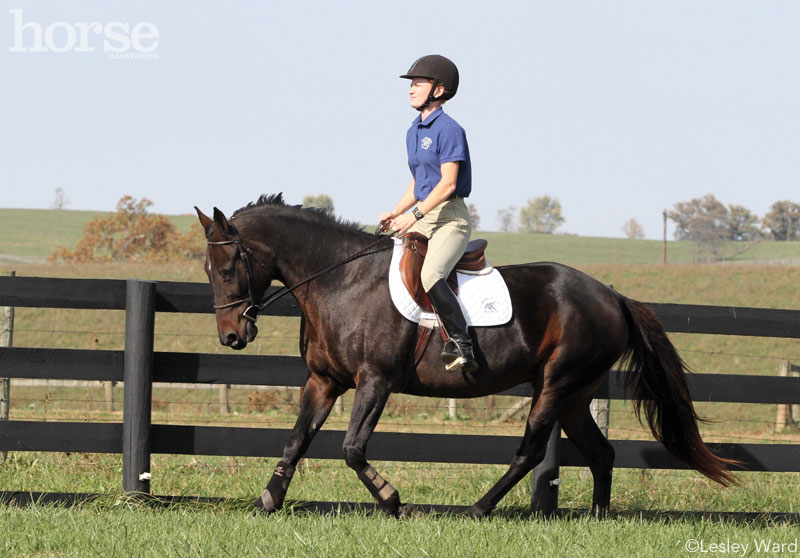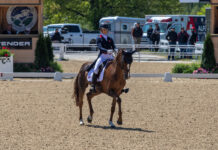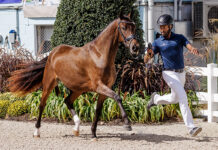
Q: I have a Standardbred mare. She refuses to go any faster than a trot. When I ask her, she just lengthens her stride and goes to a faster trot. Is there any way that I can get her to canter?
You’re trying to push the horse to go faster in an attempt to break stride, which works wonderfully with other breeds that reach their full trot capacity at about 12 mph before falling into a canter. Unfortunately, that doesn’t work with Standardbreds, which are bred to trot or pace at speeds up to 35 mph—much faster than most horses will gallop. Therefore, pushing your mare to go faster in an attempt to canter is not an effective training method in this case.
I prefer to teach the canter on the ground first, without the weight of a rider to get in the way. I use a longeline (so I can tip the horse’s nose to the inside and release quickly), but a roundpen is also helpful. The circle is necessary to keep a bend in the body. I start by teaching voice commands—I want the horse to canter off when they hear the kiss sound and the word “canter.” Eventually, it’s just the kiss I use.
The strength to maintain the gait takes time; for now, you must make a big deal out of even the smallest attempt to canter, even if your mare picks up the wrong lead or cross canters behind. The most important thing is that you reward instantly so the horse knows this is what you are looking for.
Only when a horse is consistently picking up the canter on command and maintaining the rhythm for several circles at a time will I try asking for a few steps under saddle. If you’ve done your homework on the ground, this next part often comes very easily. I use a 20-meter circle and ask for the canter out of a working trot. Keep your horse in balance as you ask; if you feel her speeding up and getting on the forehand, half-halt and return to a balanced trot.
You’re still using the basic canter aids: half-halt, place more weight on your inside seat bone, keep your inside leg at the girth, bring your outside leg behind the girth, and then squeeze (with both legs) and use your verbal command (kiss). You’ll be “asking” simultaneously by applying light pressure to your inside rein, maybe even exaggerating a bit with an opening rein to the inside. As soon as you feel the canter depart, relax your inside hand to allow the canter stride. Follow with your body and encourage the canter with just your weight and legs.
If you’re struggling with cantering in the arena, try taking your mare outdoors. Ask for the canter on a slight incline while you’re out hacking. Sometimes going over a cross-rail does the trick—trot in and see if she offers to canter out. The key to cantering your Standardbred is positive reinforcement. Even if you find yourself cantering by accident, praise generously!
JENNIFER DANIELS is the Standardbred trainer for New Vocations Racehorse Adoption Program. She is based in Laurelville, Ohio.
This article originally appeared in the May 2015 issue of Horse Illustrated magazine. Click here to subscribe!







Thanks for talking about how to teach a SB to canter. You mentioned rewarding even one stride. How would you do that?